Education for Future
- By Mian Ishaq
Education is a progressive discovery of our ignorance
…..Will Durant
In 2003, Nobel Laureate Richard E. Smalley outlined Humanity’s Top Ten Problems for the next 50 years in a talk for the MIT Enterprise Forum. According to Professor Smalley, the biggest problems facing humanity are:
1. Energy
2. Water
3. Food
4. Environment
5. Poverty
6. Terrorism and War
7. Disease
8. Education
9. Democracy
10. Population
Now in 2018, Yuval Noah Harari, a historian, thinker, and best-selling writer, is sharing with humanity the most significant problems we are going to face shortly, and these problems do not have any precedent in the entire human history; they need our urgent attention. Otherwise, we shall not be able to catch up with them. These problems are as follows:
Climate change
Nuclear war and terrorism.
We need to educate our children to make them understand who we are and how we can solve these problems at global and local levels. We must educate them not only in STEM and 4Cs but also skills of emotional intelligence and resilience, which are crucial and very critical in the future. We should teach them the learning skills, for example, how to learn, unlearn and relearn. We must train them to curate and segregate information from misinformation and disinformation.
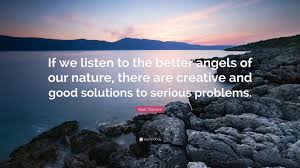
Big tech companies are collecting data by providing us with free services and machine learning and deep mind technology, finding patterns in our emotional and feeling terrains so that they know us better than anybody, even our mothers and ourselves. They do it to hijack our minds, to manipulate and patronize us according to their wishes without our awareness. At the same time, we think our actions are natural, rational, and logical consequences of our thoughts and desires and sell us for marketing. This is frightening and scary. The merger of infotech and biotech will be able to create a superhuman and a social disparity at a global scale as/ is a consequence. Machine learning and deep mind technologies are progressing at an accelerating rate. In the future, In the fourth revolution, which has just begun, most humans will be useless or irrelevant to the elite classes.
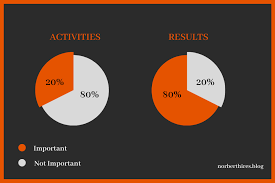
In the third revolution, also known as the industrial revolution, the paradigm was the exploitation of the masses by the rich and powerful. But, in the fourth one, the tech or digital revolution, most humans will be irrelevant to the elite; they will not need us anymore. Can we blame them for this? No. This will be a social selection instead of natural selection, and humans will evolve, with the help of technology, into superhumans. It is a gloomy picture. People are scared that machines will take over and start ruling humanity; singularity is coming sooner than we might imagine, it seems unlikely, but a biotech and infotech merger is a real game changer.
During the entire human history, humankind has solved problems and resolved conflicts or differences in opinions, ideas, and thoughts, but in doing so, created more and very different kinds of issues than those which existed already. When we deal with an open, dynamic, complex adaptive system, linear thinking, logic, and reasoning are not enough to deal with complicated situations. At that time, we needed a science that could deal with these systems/conditions, and we needed a philosophy to involve ethical and moral foundations in problem-solving. Scientists, in general, have a mechanical mindset based on Newtonian physics, which is linear, reciprocal, causative, and closed system paradigms
. The science of complexity is still in its infancy and developing; hundreds of scientists are working on it. They have laid down the foundation of some fundamental principles of the science of complexity, and here is how we can apply these principles in educational systems. Due to the computational power in different parts of the world, some scientists realized and observed that in a complex open system like climate, the slight change in initial conditions makes a big difference eventually, and that is contrary to Newtonian mechanics, which is controlled systems have proportionality; the best example are the gas laws.
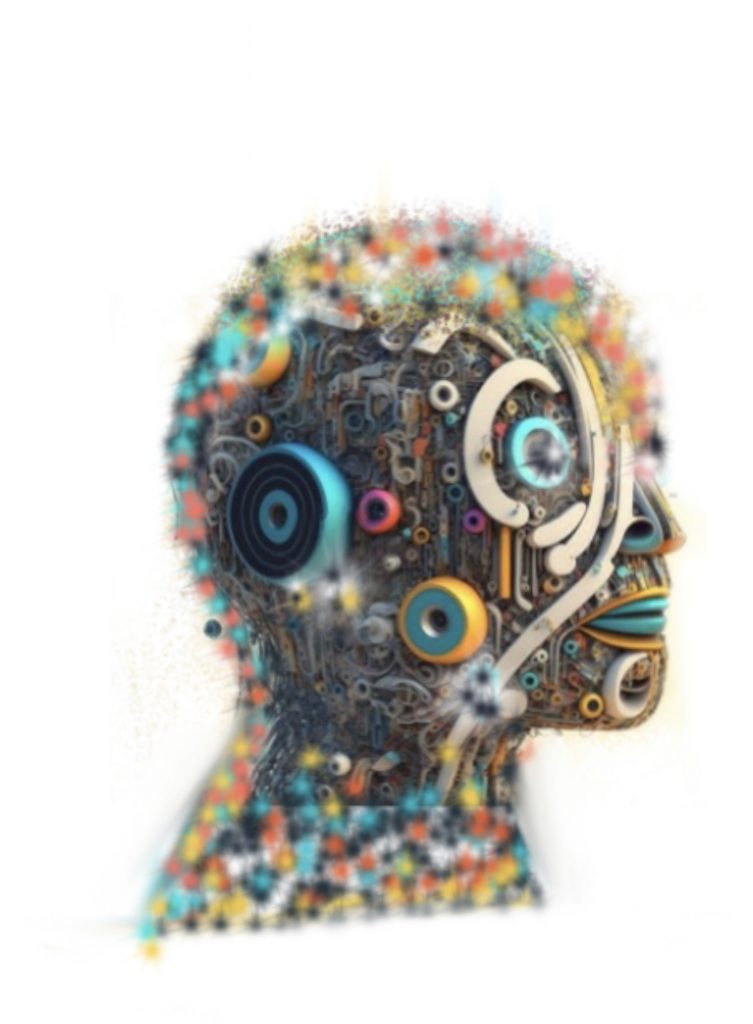
If we keep pressure constant, the temperature is directly proportional to volume. But in an open system, dynamic in nature, that does not hold. And that phenomenon has been observed in the weather forecasts. Then scientists concluded that available, complex, dynamic systems don’t follow Newtonian mechanics. Then they found fundamental principles regulating complexity, and they deduced some laws which interpret complex phenomenons, for example, rules of attractors, fractals, emergence, self-organization
Truth, Beauty and Goodness
Truth, beauty, and goodness are three concepts that are often considered to be closely related and important for understanding the human experience.
Truth refers to the state or quality of being in accordance with fact or reality. It is often associated with concepts such as honesty, accuracy, and objectivity.
Beauty is often used to describe something that is pleasing or attractive to the senses. It can also refer to a quality that is admired or valued for its aesthetic qualities.
Goodness is a quality of being virtuous, moral, or having positive qualities. It is often associated with concepts such as kindness, compassion, and fairness.
These three concepts are closely related and often intersect. For example, something that is true may also be considered good or beautiful, and something that is beautiful may also be considered true or good. In many ways, they are all important aspects of human experience and understanding the world around us.


What are the attributes of beauty?
There are many different attributes that can be associated with beauty, as it can be perceived and defined in many different ways. Some of the most common attributes of beauty include:
- Symmetry: Many people find symmetrical objects and shapes to be more aesthetically pleasing.
- Proportion: Objects that are in proportion to one another are often considered to be more beautiful.
- Simplicity: Simple, uncluttered designs can be seen as more beautiful than those that are overly complex.
- Balance: A sense of balance and harmony can be seen as beautiful.
- Color: Certain colors are often associated with beauty, such as soft pastels or bold, vibrant hues.
- Contrast: High contrast between colors or tones can create a striking, beautiful image.
- Emotion: Beauty can also evoke strong emotional reactions, such as feelings of awe or wonder.
It’s worth mentioning that beauty is a subjective quality, and what one person may find beautiful, another may not. In addition, different cultures and societies have different standards for beauty, and this can also vary over time.
Finally, there are some philosophers and thinkers who argue that beauty is not only a quality of the object, but also of the observer and the act of observation. This idea expands the concept of beauty beyond the physical attributes and into more abstract realms like emotions and personal experiences.


Subject and object beauty
Subjective beauty refers to beauty that is perceived by an individual observer, and is based on personal preferences, experiences, and cultural backgrounds. This type of beauty is highly subjective, as different people may have different opinions on what is beautiful.
Objective beauty, on the other hand, refers to beauty that is considered to be true or universally agreed upon, regardless of personal opinions. This type of beauty is often associated with concepts such as symmetry, proportion, and balance, which are believed to be objective qualities that can be measured and quantified.
It’s worth noting that the distinction between subjective and objective beauty is not always clear-cut, and the two can overlap. For example, certain principles of design and composition, like balance and symmetry, are often considered to be objective standards of beauty, but the way in which they are applied and perceived can vary from person to person.
Some philosophers argue that true beauty can only be objective and that there is a universal standard of beauty, while others argue that beauty is entirely subjective and that there is no way to determine what is truly beautiful. Ultimately, whether beauty is subjective or objective is a matter of perspective and debate.


Why does our brain feel happy looking at the beauty? Is that a primary filter for safety and security or to judge good and bad?
The perception of beauty can evoke feelings of pleasure and happiness in the brain, and there are a few different theories as to why this is the case.
One theory is that our brains have evolved to respond positively to certain visual cues that are associated with healthy, fertile environments. For example, symmetrical, proportionate faces and bodies are often seen as attractive because they are indicative of good health and genetic fitness. Similarly, landscapes and scenes with lush vegetation and clear water may be seen as beautiful because they suggest a safe and secure environment that is rich in resources.
Another theory is that the perception of beauty is related to the concept of “ease on the eye” or “visual harmony”, which triggers the reward center of the brain, releasing dopamine and other chemicals associated with pleasure and happiness.
Additionally, the perception of beauty can also be linked to the concept of “good and bad” in the sense that our brains have learned over time to associate certain visual cues with positive experiences and others with negative experiences. For example, a symmetrical face may be seen as beautiful because it has been associated with positive social interactions, while a face with asymmetry may be seen as less attractive because it has been associated with negative social interactions.
In summary, the perception of beauty can evoke positive emotions in the brain because it is associated with positive experiences or visual cues that suggest safety, security, and fertility. It may also be a primary filter for safety and security and to judge good and bad.


Save & SubmitCancel
The golden ratio, also known as the golden section or the golden mean, is a mathematical ratio that is often found in nature and in art and architecture. It is defined as the ratio of the smaller part of a whole to the larger part, which is roughly 1:1.618. The golden ratio is represented by the Greek letter phi (φ) and has been used for centuries in art and design as a way to create visually pleasing and harmonious compositions.
The golden ratio can be observed in many different forms in nature, such as the spiral patterns found in shells, the branching patterns of trees, and the proportions of the human face and body. It has also been used in art and architecture, from the design of ancient Greek temples to the composition of modern paintings and photographs.
The golden ratio is also related to another concept called the Fibonacci sequence. This is a series of numbers in which each number is the sum of the two preceding ones, usually starting with 0 and 1. The ratio of any two consecutive numbers in the Fibonacci sequence is very close to the golden ratio.
The Perito ratio is another mathematical ratio which is similar to the golden ratio, but with a slightly different value. It is defined as the ratio of the larger part of a whole to the smaller part, which is roughly 2.618:1. It is named after the Italian mathematician Luca Pacioli who wrote about it in his book “De Divina Proportione” in 1509.
Perito ratio can be used in the same way as golden ratio, and it can be found in many different forms in nature, such as the proportions of the human face and body, the branching patterns of trees, and the spiral patterns found in shells. It is less known than the golden ratio but it has the same purpose of creating a sense of harmony and balance in composition.


How is beauty related to truth and goodness? Are there more triadic expression?
Beauty, truth, and goodness are often considered to be closely related and interconnected concepts. Beauty is often associated with visual harmony and proportion, while truth is associated with accuracy and objectivity, and goodness is associated with morality and positive qualities.
One way to think about the relationship between these three concepts is that beauty is a reflection of truth and goodness. Something that is true and good is often considered to be beautiful, and something that is beautiful is often assumed to be true and good. For example, in art, a painting that accurately depicts reality is seen as true, and a painting that evokes strong emotions or moral values is seen as good, and both of these qualities can be perceived as beautiful.
Another way to think about the relationship between these concepts is that beauty can inspire truth and goodness. For example, a beautiful landscape or work of art can inspire feelings of wonder and awe, which can lead to deeper understanding and appreciation of the natural world, and this can inspire one to act in a more morally good way.
There are other triadic expressions that have been proposed throughout history, such as the three transcendentals of Thomism: Truth, Goodness, and Beauty. These three concepts are considered to be the ultimate reality and they are not limited to the physical world. They are also related to each other, and they are all attributes of God.
Other triadic expressions include:
- Faith, Hope, and Love
- Mind, Body, and Spirit
- Freedom, Equality, and Justice
- Past, Present, and Future
- Strength, Courage, and Wisdom
These triadic expressions are all concepts that are closely related and interconnected, and they are all important aspects of human experience and understanding of the world around us.
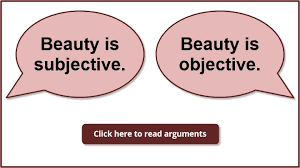

So what do you think by default human nature, egoist and egotist or orgenrous and altruism?
Human nature is a complex and multifaceted concept that is the subject of much debate and discussion. Different perspectives and theories have been proposed to explain human nature, and there is no one universally agreed upon answer.
One perspective is that human nature is inherently egoistic, meaning that individuals are primarily motivated by self-interest and the pursuit of their own goals and desires. From this point of view, human behavior is driven by the desire for personal gain, power, and status, and altruism and generosity are seen as less natural or instinctual behaviors.
Another perspective is that human nature is primarily altruistic, meaning that individuals are motivated by a desire to help others and to promote the well-being of the community. From this point of view, human behavior is driven by empathy, compassion, and a sense of moral responsibility, and selfishness and greed are seen as less natural or instinctual behaviors.
Some theories propose a balance between both tendencies, that humans have an innate drive to pursue self-interest and self-preservation, but also have the capacity for empathy and compassion, which allows for altruistic behavior.
It’s worth noting that human behavior is influenced by a variety of factors, including genetics, environment, culture, and personal experiences. Thus, it is difficult to make definitive statements about human nature. Some argue that human nature is malleable and can be shaped and influenced by different factors, while others argue that there is a core set of instincts and drives that define human nature.
In summary, the question of whether human nature is primarily egoistic or altruistic is a complex and controversial one, and different perspectives and theories have been proposed to explain it.


Is egoism innate and egotism cultural?
Egoism and egotism are related concepts, but they have distinct meanings.
Egoism is a philosophical concept that refers to the belief that self-interest is the most important principle, and that individuals should act in their own self-interest. It is often associated with the idea that people are naturally self-centered and that this is a normal and healthy way to be.
Egotism, on the other hand, is a personality trait that refers to excessive self-importance, self-absorption, and a lack of empathy or concern for others. It is often associated with arrogance, narcissism, and a sense of entitlement.
In terms of innateness, some argue that egoism is innate, in the sense that people are naturally inclined to pursue their own self-interest and to prioritize their own needs and wants. However, the degree to which this is true and the way in which it expresses may vary from person to person, and it is also influenced by cultural, social, and personal factors.
Egotism, on the other hand, is seen as a cultural and social construct, that is shaped by experiences, environment, and cultural norms. It is often considered as a negative trait and is not associated with healthy behavior or relationships.
It’s worth noting that both concepts can be expressed in a healthy or unhealthy way, and it’s important to make a distinction between assertive self-interest and harmful self-absorption, as well as between self-confidence and excessive self-importance.
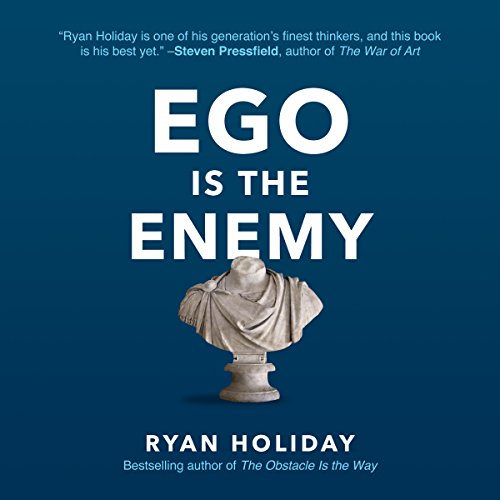

The most basic instinct is to be alive, then why people sacrificed their lives for the belief and ego, like religion or cultural value
The instinct to survive and remain alive is certainly a strong and fundamental drive for all living organisms, but humans also have the capacity for complex thoughts, emotions, and behaviors that can override or supplement this basic instinct.
Religion and cultural values can play a significant role in shaping human behavior and decision-making, and they can inspire individuals to act in ways that may be perceived as counter to their self-interest, such as sacrificing their lives for a belief or cause.
Religious beliefs and cultural values can provide a sense of purpose and meaning, as well as a belief in an afterlife or a higher power, which can make the idea of sacrificing one’s life less daunting. Additionally, religious and cultural values can also provide a sense of belonging and connection to a community, which can be a powerful motivator for individuals to act in ways that may be perceived as counter to their self-interest.
It’s also worth noting that human behavior is influenced by a variety of factors, including genetics, environment, culture, and personal experiences. Thus, the decision to sacrifice one’s life for a belief or cause is not always rational or logical but it can be influenced by emotions, values and beliefs.
In summary, the instinct for self-preservation is a fundamental drive for all living organisms, but humans also have the capacity for complex thoughts, emotions, and behaviors that can override or supplement this basic instinct. Religion and cultural values can play a significant role in shaping human behavior and decision-making, and they can inspire individuals to act in ways that may be perceived as counter to their self-interest, such as sacrificing their lives for a belief or cause.


How can we educate new generations to be prone to humanity rather than self-interested?
Educating new generations to be more focused on humanity rather than self-interest is an important goal that can be approached from a variety of perspectives. Here are a few potential strategies:
- Emphasizing empathy and compassion: Teaching children to understand and relate to the feelings and experiences of others can help them develop a sense of empathy and compassion, which can inspire them to act in ways that promote the well-being of others.
- Encouraging community service and volunteer work: Engaging children in community service and volunteer work can help them understand the value of giving back and can inspire them to think beyond their own self-interest.
- Providing moral and ethical education: Teaching children about moral and ethical principles, such as fairness, justice, and responsibility, can help them develop a sense of right and wrong and can inspire them to act in ways that promote the well-being of others.
- Modeling altruistic behavior: Children learn by example, and parents, teachers, and other role models can play a critical role in shaping children’s values and behaviors by modeling altruistic behavior.
- Encouraging critical thinking: Teaching children how to think critically, question assumptions, and consider different perspectives can help them understand the complexity of social issues and can inspire them to think beyond their own self-interest.
- Creating a nurturing and supportive environment: Creating a nurturing and supportive environment that fosters self-esteem and self-worth, as well as encouraging the development of positive relationships, can help children feel more secure and less inclined to focus on self-interest.
It’s worth noting that these strategies are not mutually exclusive and they can be used in combination to create a comprehensive approach to promoting altruism and compassion in children. Additionally, it’s important to remember that education is not the only factor in shaping values and behaviors, as cultural, social, and personal factors also play a role.


What if it is embedded in evaluating their intelligence and knowledge, granting them grades and high marks for goodness and compassion?
Evaluating a student’s intelligence and knowledge through traditional means, such as granting grades and high marks, is a common practice in most educational systems. However, incorporating evaluations of students’ goodness and compassion into the process could be a more holistic and well-rounded approach to education.
One way to do this would be to include specific assessments or criteria related to compassion and altruism as part of the evaluation process. For example, a teacher could evaluate a student’s participation in community service or volunteer work, their ability to empathize with and understand the perspectives of others, or their willingness to help and support their peers.
Another way to do this would be to incorporate the teaching and practice of compassion and altruism into the curriculum. For example, classes on ethics, social responsibility, or community service could be incorporated into the curriculum, in which students are not only taught about these concepts but also given opportunities to practice and demonstrate them.
It’s worth noting that incorporating evaluations of students’ goodness and compassion into the education process may require a shift in the way that education is typically approached, and it may require additional resources and training for teachers. Additionally, it’s important that the process is done in a way that is fair and equitable, taking into account the diversity of students’ backgrounds and experiences.
In summary, incorporating evaluations of students’ goodness and compassion into the traditional education system could be a holistic and well-rounded approach to education. However, it may require a shift in traditional approaches, additional resources and training, and a fair and equitable implementation